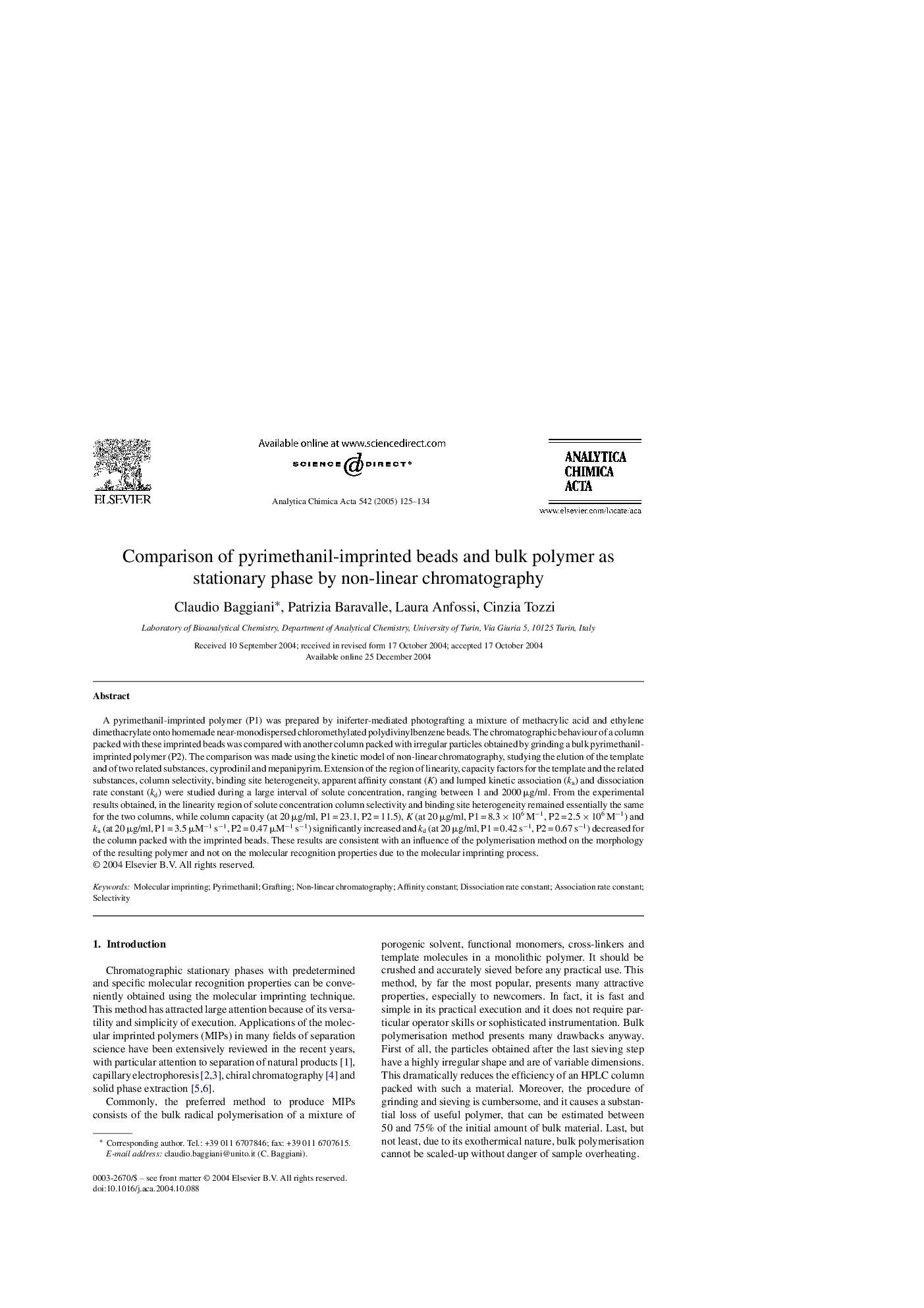| Article ID | Journal | Published Year | Pages | File Type |
|---|---|---|---|---|
| 10528707 | Analytica Chimica Acta | 2005 | 10 Pages |
Abstract
A pyrimethanil-imprinted polymer (P1) was prepared by iniferter-mediated photografting a mixture of methacrylic acid and ethylene dimethacrylate onto homemade near-monodispersed chloromethylated polydivinylbenzene beads. The chromatographic behaviour of a column packed with these imprinted beads was compared with another column packed with irregular particles obtained by grinding a bulk pyrimethanil-imprinted polymer (P2). The comparison was made using the kinetic model of non-linear chromatography, studying the elution of the template and of two related substances, cyprodinil and mepanipyrim. Extension of the region of linearity, capacity factors for the template and the related substances, column selectivity, binding site heterogeneity, apparent affinity constant (K) and lumped kinetic association (ka) and dissociation rate constant (kd) were studied during a large interval of solute concentration, ranging between 1 and 2000 μg/ml. From the experimental results obtained, in the linearity region of solute concentration column selectivity and binding site heterogeneity remained essentially the same for the two columns, while column capacity (at 20 μg/ml, P1 = 23.1, P2 = 11.5), K (at 20 μg/ml, P1 = 8.3 Ã 106 Mâ1, P2 = 2.5 Ã 106 Mâ1) and ka (at 20 μg/ml, P1 = 3.5 μMâ1 sâ1, P2 = 0.47 μMâ1 sâ1) significantly increased and kd (at 20 μg/ml, P1 = 0.42 sâ1, P2 = 0.67 sâ1) decreased for the column packed with the imprinted beads. These results are consistent with an influence of the polymerisation method on the morphology of the resulting polymer and not on the molecular recognition properties due to the molecular imprinting process.
Keywords
Related Topics
Physical Sciences and Engineering
Chemistry
Analytical Chemistry
Authors
Claudio Baggiani, Patrizia Baravalle, Laura Anfossi, Cinzia Tozzi,
